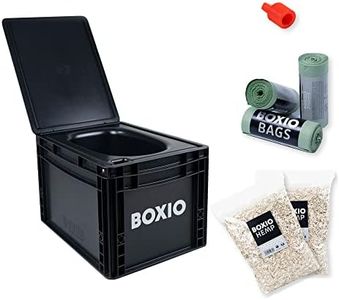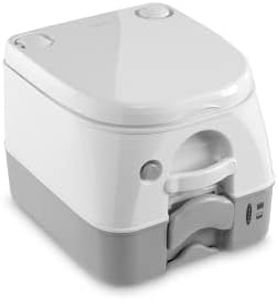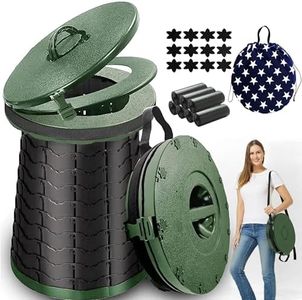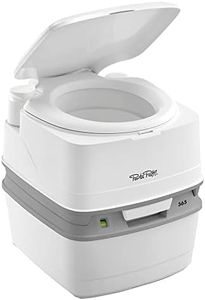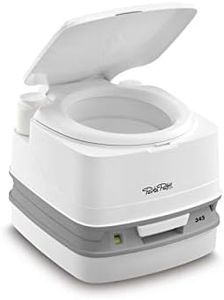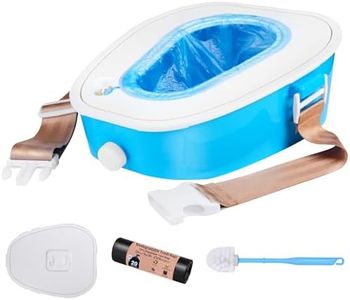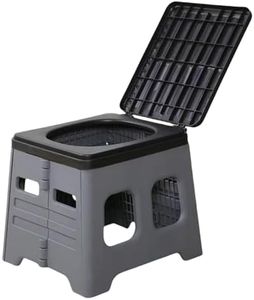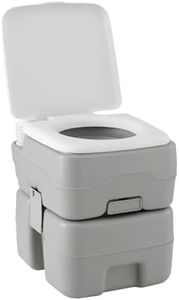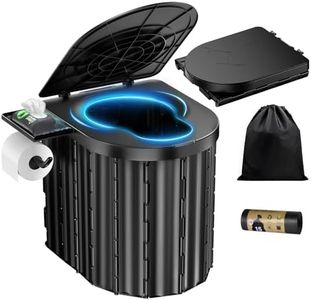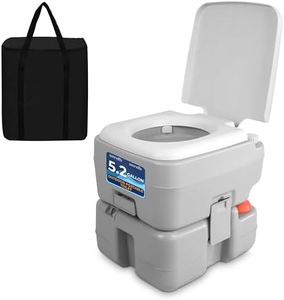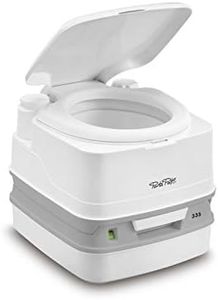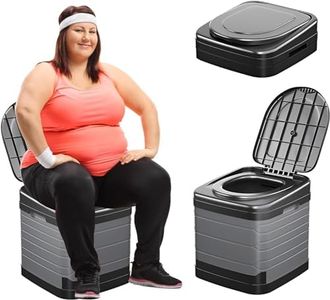We Use CookiesWe use cookies to enhance the security, performance,
functionality and for analytical and promotional activities. By continuing to browse this site you
are agreeing to our privacy policy
10 Best Portable Toilets
From leading brands and best sellers available on the web.Buying Guide for the Best Portable Toilets
Choosing the best portable toilet involves thinking about when and where you'll use it, how many people will depend on it, and how easy it is to clean and transport. This is about finding a balance between comfort, convenience, and practicality. Whether you need a toilet for camping, events, work sites, or emergencies, it pays to understand the key features so you can pick the option that best suits your personal needs.CapacityCapacity refers to how much waste the portable toilet can hold before it needs to be emptied. This spec is important because it determines how often you'll need to maintain the toilet, which can affect convenience, especially if you’re far from disposal facilities. Smaller capacities (1-3 gallons) are easier to carry and work well for solo uses or very short trips. Mid-range sizes (3-5 gallons) balance size and convenience, suitable for small groups or several days’ use. Larger capacities (5 gallons and up) are best for families, groups, or longer trips, but will be heavier and bulkier to handle. Consider how many people will use the toilet and how long you’ll be away from disposal facilities to pick the right capacity.
PortabilityPortability covers a toilet’s size, weight, and ease of transport. It matters because the whole point is to move the toilet easily to wherever you need it. Smaller, lightweight models are simple to carry, making them perfect for hiking, backpacking, or frequent moves. Mid-range options often have handles or wheels and are good for car camping or RVing. The bulkiest models are tougher to move, but might be worth it if you want more comfort or need it for a stationary site. Think about how far and often you'll have to carry the toilet and choose a model that's comfortable for you to transport.
Waste Disposal MethodWaste disposal method describes how you empty and clean the toilet. It’s important for hygiene and user comfort. Some portable toilets use basic buckets with liners that you throw away, which are simple and cheap, but you have to keep replacing the liners. Others have sealed tanks with pour spouts or valves that let you pour out the waste, which is neater but may need special care. There are also composting types that use chemicals or natural processes. The right disposal method depends on your tolerance for mess, environmental considerations, and available waste disposal facilities where you'll use the toilet.
Seating ComfortSeating comfort relates to the size and shape of the seat and its height off the ground. It’s important because a comfortable seat makes longer or repeated use much easier, especially for children, elderly, or anyone with mobility issues. Basic models may offer minimal seating, suitable for short-term use or emergencies. Standard-height seats are comparable to home toilets and provide the most comfort for regular use. Lower or narrower seats save space and weight but may compromise on comfort. Think about who will use the toilet and how often, and choose the seat configuration that ensures everyone can use it comfortably.
Odor ControlOdor control is the way the toilet manages or contains smells from waste. It matters a lot in close spaces. Some portable toilets have sealing lids, built-in chemicals, or ventilation to help keep odors at bay. Basic units may need frequent emptying or additional deodorizers, while advanced models use chemicals or even composting systems for better control. If you are in a tent, RV, or other enclosed area, prioritize good odor control features; if you’ll use it outdoors or infrequently, you might opt for a simpler design.
Ease of CleaningEase of cleaning means how simple it is to maintain and sanitize the portable toilet after use. This is important for hygiene and the lifespan of the toilet. Models with smooth plastic surfaces, removable parts, or built-in rinsing systems are usually easiest to keep clean. More basic models may require manual scrubbing and might stain or retain odors over time. Consider your willingness and ability to perform maintenance; for frequent or shared use, prioritize models that are designed to be easy to clean.
